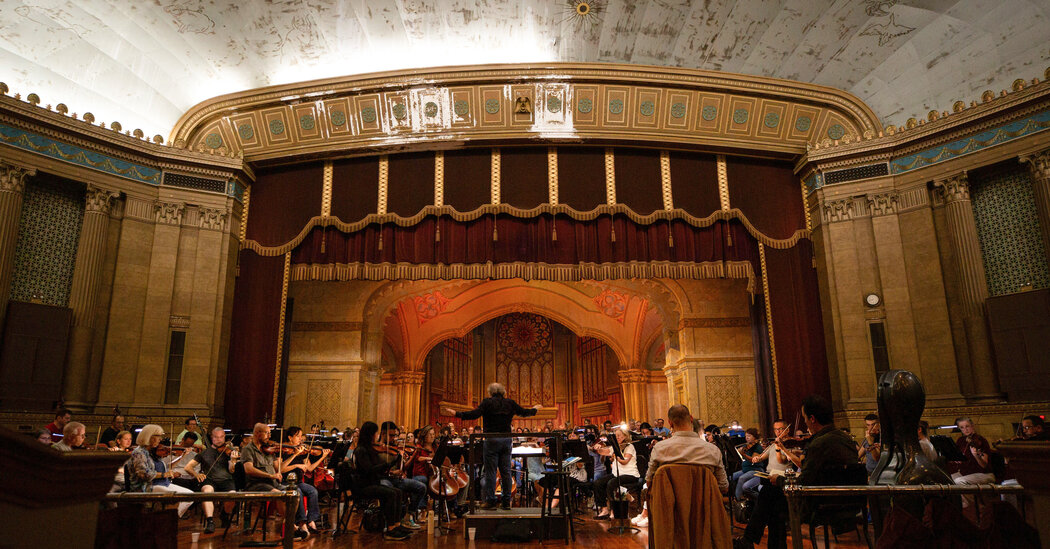San Antonio Philharmonic’s Dramatic Struggle and Revival
The incredible journey of the San Antonio Philharmonic is not only a tale of perseverance, but a reflection of the transformative power of music and community.
Orchestral Melodies at Risk
Not too long ago, the San Antonio Symphony, an ensemble with a rich history dating back to 1939, faced a sudden and shocking dissolution. Mounting debt, dwindling ticket sales, and administrative turbulence culminated in what seemed like the end of an era for San Antonio’s classical music scene.
The community braced itself for a future without the harmonious voices of violin solos or the earth-shaking thunder of timpani drums. Yet, adversity often sparks innovation, and what followed was nothing short of miraculous.
A Collective Vision for Revival
Out of the rubble of the orchestra’s collapse, a collective of passionate musicians, arts advocates, and local supporters banded together. Determined not to let the symphony’s legacy fade into silence, they envisioned something bold: the creation of the San Antonio Philharmonic.
Drawing inspiration from other successful orchestra models, the new Philharmonic aimed to center its operations on transparency, community collaboration, and sustainable funding. They knew it wouldn’t be easy, but their hope was unwavering.
The Power of Community-Led Creativity
Unlike traditional orchestral structures, the new Philharmonic was built with a grassroots approach. Musicians themselves played an active role in decision-making, ensuring that concerts aligned with the tastes and interests of local audiences. Education and outreach programs were prioritized, fostering a deeper connection between the Philharmonic and the city it serves.
The orchestra organized intimate performances in schools, community centers, and outdoor venues, taking its music to those who had never set foot in a concert hall. Such efforts resulted in a surge of new fans from diverse backgrounds—proof that art can truly bring people together.
An Unlikely Alliance with Financial Struggles
Financial survival remained a concern. Ticket sales alone couldn’t sustain an orchestra, and philanthropic donations had become unpredictable. However, the San Antonio Philharmonic found unique ways to stay afloat.
Notable partnerships included collaborations with local businesses and cultural centers, leveraging shared resources to reduce costs. Grant applications and patron campaigns brought in much-needed support. Audiences stepped up as well—recognizing the value of the Philharmonic, they pledged donations and attended concerts in droves.
External organizations also lent a helping hand. For example, the League of American Orchestras provided consulting insights, ensuring the Philharmonic avoided the pitfalls that brought down their predecessor.
A Triumphant Return to the Stage
The defining moment for the orchestra came when it staged its first sold-out performance in years. The concert hall was electrified with applause as musicians, many of whom had endured months of uncertainty, delivered a breathtaking performance that seemed to declare, “We’re back!”
Local reviews hailed the performance as a moment of pride for San Antonio—a marker of what the city could achieve through love for art and tireless perseverance. As the final note lingered in the air, it wasn’t just music that resonated. It was hope.
Looking Forward: Ensuring Longevity
Though the Philharmonic has achieved something extraordinary, its leaders remain acutely aware of the challenges ahead. Sustaining a symphony is a delicate balance that requires smart planning, unwavering dedication, and continual engagement with the community.
But there is reason to be optimistic. With innovative programming, trusted local partnerships, and a growing community of supporters, the San Antonio Philharmonic has laid the foundation for a future defined by harmony and resilience.
A New Era for San Antonio’s Cultural Scene
Today, the San Antonio Philharmonic isn’t just an orchestra. It’s a movement. It stands as a reminder of what’s possible when people refuse to let art die. Its success offers hope to other at-risk institutions across the world: rebirth is possible with enough passion and determination.
San Antonio now boasts a philharmonic worthy of the city’s rich cultural identity. Whether you’re a long-time symphony aficionado or someone new to orchestral music, this is a story worth celebrating—and a concert worth attending.
“`





